Fashion inevitably looks to history to interpret and re-interpret previous fashion trends. At the recent SAG Awards, I noticed 2 Egyptian-influenced dresses, worn by Toni Collette and Nicole Kidman:
As I’m never content to stay in the current era for long, let’s go back 100 years to trace a century of Egyptomania….
The Egyptian style has been adopted and interpreted by practically every generation. Cleopatra (69BC – 30BC) has always held special fascination for people. Documented by writers Plutarch and Casius Dio, the lady was “a woman of surpassing beauty, and at that time, when she was in the prime of her youth, she was most striking; she also possessed a most charming voice and knowledge of how to make herself agreeable to every one. Being brilliant to look upon and to listen to, with the power to subjugate every one, even a love-sated man already past his prime, she thought that it would be in keeping with her role to meet Caesar, and she reposed in her beauty all her claims to the throne.” The mythology of her man-seducing ways never gets old; she notoriously bedded Julius Caesar and his successor Mark Antony resulting in a Roman-Egyptian political alliance of unsurpassed breadth, and took her own life in a marvelously morbid manner. Having become an almost mythological creature, she’s been depicted in art ever since. With the dawn of the 20th century’s art form — the moving image — a new crop of Cleopatras have been etched into our collective consciousness. With each Cleopatra film, a new variation of familiar Egyptian themes rears its head. In spite of the common subject, virtually none of these films used historically accurate costumes. As always, the ideal female form, makeup techniques, and hairstyles are more indicative of the decade of film production rather than the period depicted.
THEDA BARA
The 1917 version of Cleopatra with the marvelously eccentric Theda Bara (see my post on Vamps for more on Theda) demonstrates how aesthetics were ripe for incorporating Egyptian motifs. Though it’s the earliest film I’ll discuss, in many ways it’s the most scandelous, with Bara wearing sheer, gauzy skirts and teeny, ornate bras that barely conceal her naughty bits (this was only legal pre- and post-Hays Production Code, 1934 – 1968). Fashion was just starting to move away from the corseted figure and Theda embraced the freedom in her Nile goddess:
This last one reminds me of “The Last Sitting” of Marilyn Monroe, photographed by Bert Stern in 1962 (Marilyn is clearly far more playful than Theda):
The khol-rimmed eyes already popular in the 1910s and 20s were easily adapted to more accurate heavy Egyptian makeup:
In this outfit, the mythology of the Egyptian firebird and immortal Phoenix are translated into a more general symbol of Far East exoticism, the peacock:
The 1922 discovery of King Tut’s intact tomb of lost treasures rocked the world. The angularity of the Egyptian depictions of their garments played right into the visual fractures of the Futurism and Art Deco movements.
Here is one of my favorite Futurist paintings:
Here is an elevator door from the Chrysler Building (built 1929-1930), monument of Art Deco architecture:
CLAUDETTE COLBERT
By the time Cecil B. DeMille’s Cleopatra (1934) starring Claudette Colbert was made, the bold Art Deco lines of the ’20s were starting to give way to the softer drapes of the ’30s. Coincidentally (or not), the ’30s gave way not to Egyptomania, but to similarly ancient Greek/Roman revival. Designers like Fortuny and Madeleine Vionnet embraced the pleats, draped lines and classical simplicity of the ancient Greeks and Romans.
Fortuny’s famous sheath gown was based on the classical Greek chiton was appropriately named the “Delphos” gown:
The crinkly texture is the result of a meticulous, top-secret process Fortuny never revealed — customers would return their gowns directly to the designer for re-pleating when the pleats flattened.
Colbert’s Cleopatra is a bit more smug, a bit cuter, a bit less vampy than others, as seen in her rather benevolent expressions. The first ensemble is one of the only film costumes I found that actually incorporated pleating:
The simple geometry is complimented by the extravagant gold lame skirt, or with vaguely exotic peacock imagery:
The red lips and drawn on, razor-thin eyebrows were typical of the ’30s:
LIZ TAYLOR
Though the movie was a box office flop — at least compared to its exorbitant, record breaking budget — Elizabeth Taylor as the 1963 version of Cleopatra is perhaps the best remembered today. They used the still-young Technicolor technology to great effect in her eye-popping monochrome outfits. While black and white certainly contributes to the bygone times feeling of the other films, color symbolism was important to the Egyptians, and the ’60s were all about psychedelic colors. Taylor’s wigs are probably the most blatant of the 3 Cleopatras — no effort is made to maintain consistent hair length, texture or style. This is actually accurate; wealthy Egyptians had shorn heads and wore wigs to avoid lice and to be cooler (sans wig) in private.
The liquid-liner experiments of the mod 1960s and the geometric Vidal Sassoon hairdos come through in Liz:
The cinched waists of the of the ’50s are still evident (these were always to be in style for the curvaceous Ms. Taylor):
Madame Gres (1903-1993) continued the trend of classical Grecian style throughout her career, with unauthentic molded bodices and soft jersey that nonetheless mimiced the draped swags of Greek himations:
These films have melded a generic Egyptian look, as recognizable by the general public, with fashions of the periods during which they were created. Critical as I may be in matters regarding historical accuracy, this liberty doesn’t actually bother me. The costume designers needed to convey the allure, sexiness, and unquestionable power Cleopatra commanded with her physical presence to modern audiences, and inaccurate as the garments are, I think all were successfully interpreted through modern lenses to further the plots using visuals viewers would implicitly understand.
We’re about due for another incarnation of Egyptomania, don’t you agree?

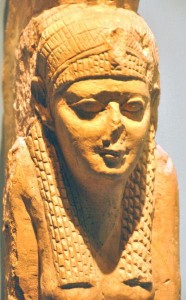






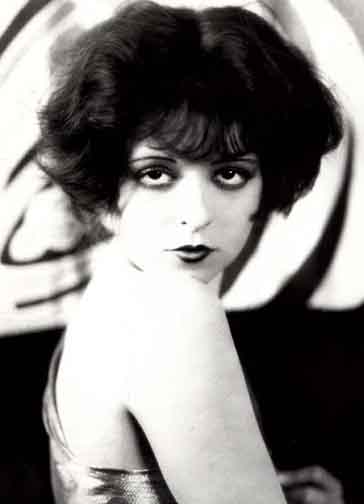
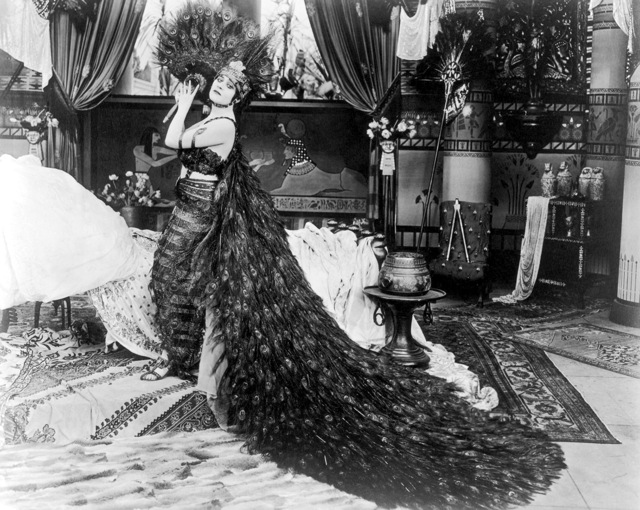
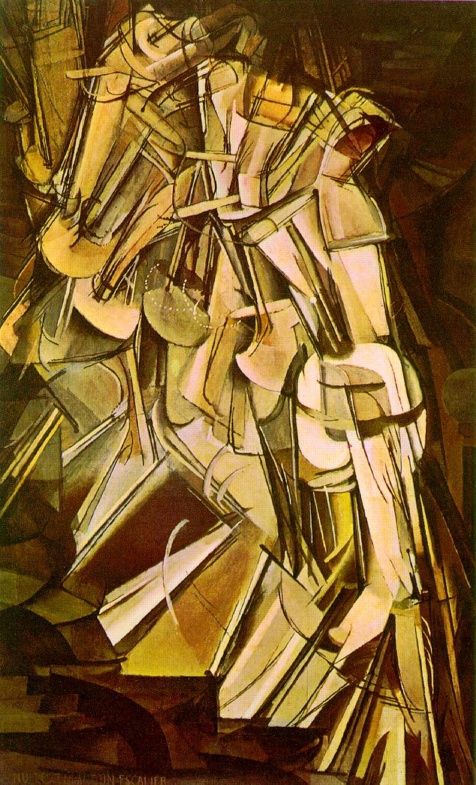

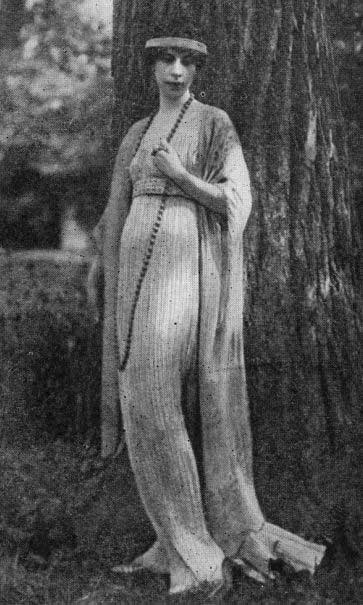
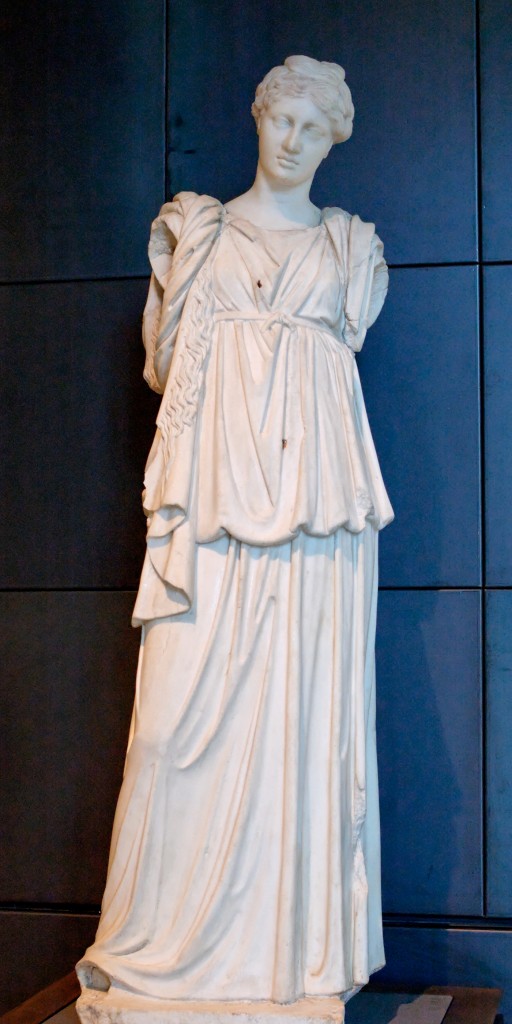
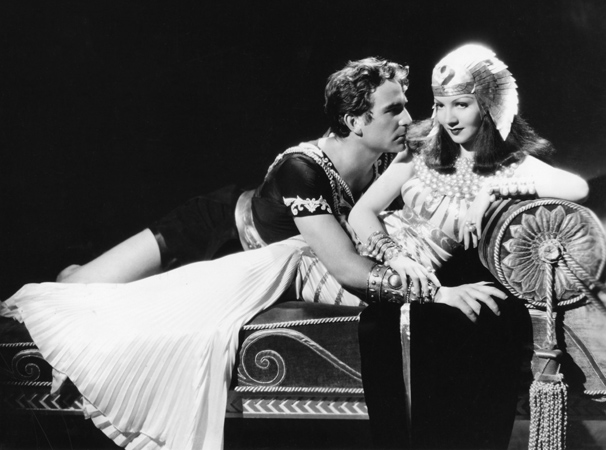






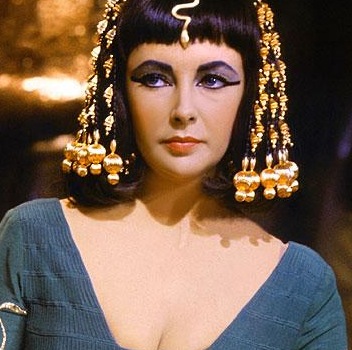


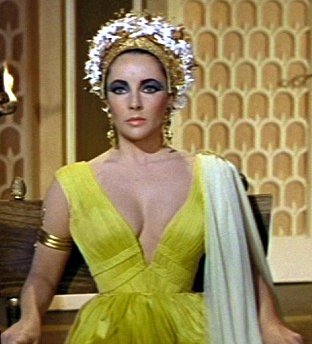
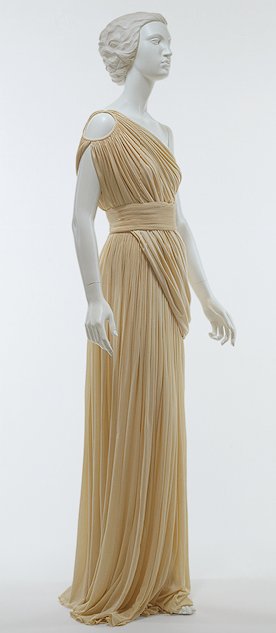




























2 comments
Film Adaptation says:
Jul 23, 2010
Lol… I saw an emo Cleopatra in the images…
Ah, in the short time, there will be new film about Cleopatra, finally we could see the enigmatic egyptian woman in modern and big budgeted film.
Alaina says:
Feb 6, 2010
I agree…I love the beaded sheath dresses best. I would *love* to see an authentic ancient egyptian costume drama. Do you know of any at all?